CAMPS international
ETHICAL JOURNEYS WITH IMPACT






Our Team has spent over 20 years working to improve the lives of communities, and make a positive environmental impact wherever we operate. Everything we do starts with a commitment to sustainable projects. We build our camps to deliver on sustainable development goals and design our student experiences to create the maximum impact to the planet, and the young people who travel with us. We call it ‘The Camps Effect’ and it is the purpose that drives all of us at Camps International. This report is particularly special, as it celebrates our return after almost a million hours of project impact lost to the Covid Pandemic. We are immensely proud of the pages that follow. It is a testament to the extraordinary young people who choose to join us every year, and we are deeply grateful to each and every one of you.
Stuart Rees Jones CEO and Founder of Camps International
In 2022, we proudly celebrated our 20th anniversary and thought it was the perfect opportunity to reflect on our ongoing impact. Our journey started in 2002 with three participating schools in Kenya. Two decades later, we have worked with more than 1,000 schools and over 50,000 young people, creating and enhancing essential infrastructure and bringing real-world issues to the classroom through our educational programme, ‘Real World Studies’. Our focus during this period has seen contributions to food and water security, wildlife conservation, and housing and welfare within underdeveloped and vulnerable communities around the world.
Despite the global pandemic, which resulted in an estimated 845,000 hours of lost project work for Camps International and our community partners across 2020 and 2021, we had a strong comeback. We succeeded in delivering 73 projects across eight global locations in 2022 alone. More than 3,000 trees were planted last year, bringing our total number to more than one million. More than 85,000 acres of conservation land were protected during the same period.
None of this could have been achieved without our committed student travellers, staff, project partners, fundraisers and generous donors. Hopefully you are as proud as we are at the amazing projects we have worked on together and how important your continued support is to us.
For those of you that are yet to experience one of our adventures, we hope this gives you an insight into why we do what we do and how, by working together, we can achieve lasting positive global change.
All of our projects featured here are either funded directly by Camps International, or by generous donations through the Camps Foundation.

















Each of our



is designed to support the UN Sustainable Development Goals (SDGs) and in particular the following SDGs within Kenya.






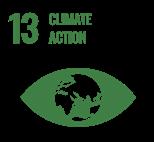

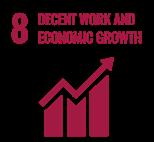

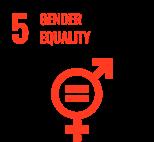
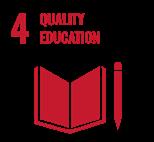
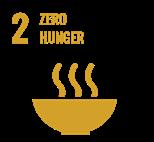





Kenya Project Highlights (2002 - 2022)
240,000+
28,000+ 1,200+
Acres of habitat protected
Livestock dewormed Tables built
48,000 3,000+
Built or renovated homes
38 Pieces of elephant dung paper
Elephant deterrent fences
Ongoing project work to improve schools’ infrastructure across 8 different schools, to foster a better learning environment.
Provided essential medical care and treatments to almost 30,000 people living below the poverty line in rural Kenya.
In Kenya, all projects are designed to make a significant and lasting impact on the region’s most critical issues. Projects typically focus on:


Working on school improvement projects, where they may build or renovate school buildings to create inspirational and stimulating learning environments.
Building or renovating traditional houses to support community development in one of the poorest communities.
Initiatives to provide a peaceful existence between humans and wildlife such as building elephant deterrent fences to safeguard the future of these incredible animals.
Reforestation work in the sacred Kaya Forest, an important habitat for a number of species of monkey.

Nearly all communities living along coastal East Africa rely heavily on the sea for their existence. Yet their unsustainable and destructive activities are putting their livelihoods and the oceans at risk. Our Marine Conservation Project was set up in 2004 to help change attitudes and behaviours within the local communities, helping them move towards more sustainable practices and preserve natural resources for the benefit of wildlife and future generations. This initiative focuses on hands-on conservation, education and community involvement.
Approximately 60kg (over 35,000 pieces of trash) was removed from the beach with over 91% of this being plastic.

Baraka Conservation Group was founded in 2004 to support sustainable marine based livelihoods. This was prompted by the 2004 Tsunami. In 2009, we started to assist the group through volunteer participation and visitor fees, helping the women expand this enterprise. This community-managed aquaculture project also involves essential mangrove conservation and education, agro-fisheries support, and developing eco-tourism in the 615 acre mangrove.
Planted over 100 mangrove seedlings and refurbished 8 fish ponds.

This ongoing project aims to rebuild and repair damaged and dilapidated houses belonging to the elderly and most vulnerable residents of Muhaka. In most cases, this involves demolishing the old structure and rebuilding a safer and more durable dwelling. Our ultimate goal is to ensure everyone has a safe shelter to call home.
2 new houses were built and 3 renovated for families that had no shelter. The work involved constructing new mud walls, installing and replacing new makuti shade roofs, installation of doors, windows and flooring. All houses were successfully completed and handed over to the families.
What is Makuti?

Traditional roof thatching made from the sun-dried leaves of the coconut palm.
The coastal forests of East Africa are some of the most beautiful and biologically important areas in the world, supporting many endangered plant and animal species, making them a priority for conservation efforts. However, more than 30 million people also inhabit this region, putting increasing pressure on these precious natural resources.
Kaya Muhaka is a small area of this coastal forest and is an important cultural and religious site for the community. Our

projects aim to protect this forest and its wildlife, whilst at the same time creating an income for the community based on sustainably using the forest’s natural resources.
Kayas are sacred forests that historically provided resources and shelter to the village in times of hardship and together comprise a UNESCO World Heritage Site. They are also home to a variety of wildlife including vervet monkeys, sykes monkeys, bushbabies, yellow baboons, suni antelopes & endangered species such as Angolan black and white colobus monkeys and golden rumped elephant shrews.
KC-MUH-002 KE-MUH-003KE-MUH-004
Muhaka village is located in Kwale District and records high incidences of poverty with an estimated 70% of the population living below the poverty line. This area of Kenya has been ranked as one of the poorest in terms of education and resource development, with less than half of all children having access to an education.
The government provides limited financial support towards school development and due to poverty, parents cannot afford to contribute to renovation. The head teacher is very proactive in providing the best education to the children. However, funding has not been adequate to maintain school facilities.
Our aim is to refurbish the school, repair classroom floors, walls and repaint each building to improve the learning environment and safety while at school.
2022 Update:
Project work involved refurbishment of classrooms, including replacing 5 corridor floors, 2 classroom floors, improving the learning environment of 10 classrooms by painting and refurbishing blackboards.

Itinyi is located within the Taru Desert close to the Tsavo National Parks. This area is seasonally very arid with food and water in short supply. Most families are living below the poverty line due to very low income jobs.
2022 Update:
Project work focused on classroom refurbishment. 4 classroom veranda ramps were completed to allow children and those with disabilities to access the classroom. The interior and exterior of 9 classrooms were painted to improve the inside learning space and provide protection from external elements, 12 doors were repaired.
KC-ITI-004KC-ITI-003

Marungu Primary School has over 500 students. As with most public schools in Tsavo, limited government funding has prevented the expansion or maintenance of the school infrastructure.
10 classroom blocks were refurbished, inner and outer wall painted, 8 doors refurbished and painted, 12 window refurbished and painted, 2 classroom corridor refurbishments completed, 3 classroom ramps completed. A total of 214 bricks were made and used during the construction period.
32 indigenous trees were planted within the school compound to counteract soil erosion.

KC-KAL-001
Kale Primary is located in a semi-arid land southeast of Tsavo, Kenya. Camps International have been supporting the Kale school for over 8 years to improve the dilapidated infrastructures and better the education environment for the pupils to enable them to thrive academically.
7 classrooms have been refurbed, inner and outer walls painted, 2 classrooms had their floors repaired, 12 doors were repaired, and 4 veranda ramps completed. A total of 150 bricks were made and the library was painted.
Interview with Headmaster Mr Dickson
KC-MAU-008
The Tumaini Women’s Group was established in 2002 to empower local women who suffer from gender-based poverty, violence, illiteracy, and health issues. With virtually no formal employment opportunities, poor climatic conditions for agriculture and poor access to loans, the group offers support to those women eager to improve their finances through alternative income generation activities such as arts, crafts and eco-tourism.
We offer ongoing support to the women’s groups of the Maungu area in Kenya, so they can develop new skills, generate an income and elevate their status in the community.
2022 Update:
Over 300 pieces of elephant dung paper were made, 400 bracelets and 100 beaded neckless.
15 sessions of gender equality and women empowerment programmes were carried out.

$900 was made from the sales of elephant dung paper and bracelets to boost the Women’s Development Programme.
KC-MAU-009
This ongoing project aims to improve animal welfare practices by regularly de-worming community livestock. This project not only improves the health and welfare of the animals but also has a significant economic benefit to farmers and discourages poaching in and around the National Parks.
2022 Update:
2500 livestock (goat, sheep and cattle) were administered with deworming treatment.
We are working to support The Wildlife Foundation (TWF) in and around Nairobi National Park with particular focus on their ‘Lion Lights’ project.
The Lion Lights project was started by TWF 8 years ago and has proved to be effective in reducing livestock loss by 90%. Solar-powered flashing LED light systems have been installed around livestock pens within the community homes. The flashing lights trick predators into believing humans are on the lookout which helps prevent night-time predators from attacking the livestock.
The project has been extremely effective in mitigating human/wildlife conflict among the Neratunoi village and its surroundings.
2022 Update:

12 sets of lion light deterrents were installed to protect livestock in 12 homesteads to mitigate human wildlife conflict within the Naretunoi Conservancy.
4 tonnes of rubbish was collected from the 8km distance along the Mbagathi River in the Nairobi National Park and a 3km pathway was cleared on the Echo Nature Trail Path enabling tourists to visit the community curio shops that bring income to the community.

8 washrooms were renovated at the Hippo picnic area.
The Lion Lights system has been proven to benefit the community in other ways alongside the primary use of protecting the livestock. Households are able to make use of the domestic solar energy to light their homes with bulbs as opposed to lantern lamps which can be hazardous. This provides more flexibility within the day and gives children additional time to focus on their homework, even after the light has started to fade.

Rukinga Wildlife Sanctuary is a 80,000-acre wildlife haven that lies between Tsavo East & Tsavo West National Parks in southeast Kenya. Wildlife Works converted this land into a wildlife sanctuary in 1998 after many problematic years functioning as both an important wildlife migratory route and a working cattle ranch. The land had become barren from overgrazing and poachers were destroying what little wildlife was left. Now the sanctuary is thriving again and is home to more than 50 species of large mammal, many of which are endangered including elephants, Grevy’s zebras, cheetahs, lions and African wild dogs. There are also more than 300 species of birds residing in this important wildlife haven. However, the sanctuary faces continuous challenges from ivory poachers, illegal deforestation and conflict between farmers and wildlife, resulting in the need for constant restoration and protection if rare wildlife is to continue to flourish here.
Human wildlife conflict remains a big problem. The human population surrounding the sanctuary is rapidly increasing (around 20,000 people live on the sanctuary borders) and competition between people and wildlife for precious resources such as water, food and space is fierce. Since 2008, we have supported the work of Wildlife Works and the Kenya Wildlife Service by improving wildlife water holes, maintaining roads for anti-poaching patrols, helping farmers protect their crops using fences and establishing environmental education workshops to highlight the importance of Africa’s wildlife and demonstrating how people and animals can co-exist peacefully. We are also involved in indigenous tree planting in both Rukinga and Marungu hills in an effort to reforest damaged parts of the environment and provide a source of income for the local communities.
Installed 1.5km elephant deterrent fence to mitigate human wildlife conflict to the community living around Rukinga Wildlife Sanctuary and the Sagala Ranch.
Made 600 pieces of elephant dung paper.
Many people in rural Kenya are living below the poverty line and access to proper healthcare is often limited or non-existent. Marungu has more than 5000 inhabitants and the community has a couple of local hospitals and dispensaries, but facilities are very poor and they do not have enough equipment or expertise to treat so many people. It is not uncommon for women to walk many miles with a sick or injured child in order to reach a medical facility.
We provide ongoing free medical health outreach clinics across the south coast with the support of our dedicated team of UK qualified medical volunteers. Offering much needed support on personal health education and hygiene as well as treating a wide range of ailments and offering critical information exchange with local practitioners. We are also involved in improving medical infrastructure and providing essential drugs and equipment to local hospitals.
Healthcare volunteers provided 7 free medical clinics in villages and treated over 2000 patients.
Highlights included:
- Delivering dental healthcare education, treatment and extractions
- Treating over 400 patients at the eye clinic and providing 109 patients with reading glasses.
- Over 900 children benefitted from skin screening and treatment.
- Over 400 people benefitted from clothes donation from the UK nurses handed over during the project exercise.
- All patients were administered with de-worming tablets to treat worms.

KC-REF-001
Working alongside the REEFolution Foundation, this project aims to restore corals along the reef shores of Shimoni and Wasini Island. The project works closely with the community, conducts education, and have all year round research students to further the coral conservation effort through the restoration of local reefs and creation of the artificial reefs with the help of the local community. The project combines both local and scientific knowledge to aid coral growth and reef
formation. The aim is to sustain local biodiversity and improve the livelihood of those who depend on the marine ecosystem resources.
10 corals reef fragment frames were constructed.
Did you know?
Coral reefs provide a home that supports more than a quarter of all marine life? Corals are much more than just beautiful. They provide important ecosystem services to people and planet. Yet they are under threat.
Source: UN Environment Programme


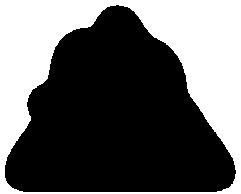


Each of our projects is designed to support the UN Sustainable Development Goals (SDGs) and in particular the following SDGs within Tanzania.

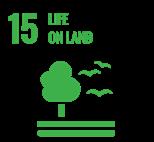

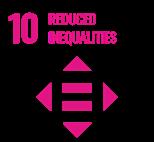
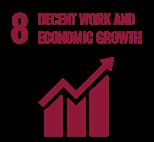
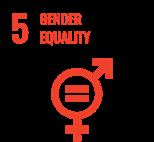
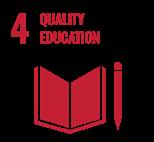






Tanzania Project Highlights (2007 - 2022)
15 Worked with 15 schools to provide a better and safer learning environment.
1,500+ Trees planted 2600 Flip flop key rings created
Wildlife Conservation: Ongoing work to improving the landscape for the benefit of wildlife. This includes activities such as:
• Wildlife and anti-poaching monitoring
• Invasive species removal
• Snare removal
• Waterhole maintenance
• Habitat restoration
In Tanzania, you will work on projects that are designed to make a significant and lasting impact on the region’s most critical issues. Projects typically focus on:

Working on school improvement projects, where they may build or renovate school buildings to create inspirational and stimulating learning environments.
Building or renovating traditional houses for the homeless, elderly or disabled.
Initiatives to provide a peaceful existence between humans and wildlife such as improving natural waterholes or building elephant deterrent fences to safeguard the future of these incredible animals.
TC-MBO-001
Mbokomu School along with Father Neville’s School (TC-MBO-002) is based in the small village of Korini Kusini in the Kilimanjaro foothills. With around 14,600 inhabitants, this region has experienced a steady increase in primary school attendance since the abolition of school fees in 2001.
However, access to good quality education facilities outside of the cities is very limited and few students continue to secondary school. For this reason, it is important that the young children of Mbokomu receive an effective primary education to support them in gaining employment once they leave the education system.
2022 Update:
Refurbed 4 classroom floors.
Completed the foundations for 2 verandas and large dining hall. Completed drainage system.

TC-TAN-013
Subutuni is a coastal lowland village in Tanga with a population of around 3,000 people. Almost every family here is living below the poverty line due to the collapse of the local fishing industry. The nearest school is more than four kilometres away, which is too far for small children to walk to regularly attend.
Initially we are building a new classroom for the village that will be used as a preschool for children aged between 5 and 8 years old who cannot walk long distances to attend school. Ultimately, we want to establish a primary school at Subutuni that will benefit the entire community by boosting education development in the area.
2022 Update:
Floor foundations of a new classroom completed. When fully constructed, this will bring the number of classrooms up to three.
TC-MBO-003
The school was established in 1985 in Kiboroloni and has around 400 students. The foundation walls of the school have become weak and cracked flooring poses a risk to student safety. Like most rural schools in Tanzania, Kiboroloni lacks the resources to fix worn out classrooms and school infrastructure.
Since 2018, we have been working with the school to refurbish classroom flooring and verandas, reinforce classroom walls and improve office and kitchen flooring. Refurbed 30 classroom desks.
2022 Update:
Worked on improving the learning environment, by painting classrooms and murals.
TC-MBO-002
We continue to work with the Father Neville Primary School on classroom improvements. In 2022, we concentrated on completing 500m of pathway to protect students from the mud and slippery ground when attending their classes.

TC-TAN-015
Subutuni village is situated on the coastal belt of Tanzania where a large percentage of the population are dependent on fishing for their livelihoods. The high levels of unemployment in Subutuni has led to chronic widespread poverty and many people have been left homeless when their house falls into disrepair, especially the elderly or infirm. We have been working within the community since 2014, completing or refurbishing up to 20 houses.
2022 Update:
Refurbished 1 traditional house.
TE-MCP-008
This project is an extension of our very successful Mwamba Conservation Project in Kenya (KE-MAK-004) designed to educate our travellers and local people on the importance of conserving our marine environment. This project involves regular beach clean ups and then a workshop to make saleable items from reclaimed marine refuse.
2022 Update: Removed 70 kg of rubbish from Subutuni beach.
Made 200 flip flop key rings from recycled flipflops.

Completed 8 reef balls.
TW-NDA-004
This 11,000-acre ranch is one of the most biologically important habitats in Tanzania, where wildlife can still roam relatively freely over large areas. Its location provides an essential wildlife corridor between Amboseli and Arusha National Parks. The ranch is a permanent home to over 65 species of mammal including elephant, zebra, giraffe, wildebeest and mountain reedbuck, as well as 350 species of birds. Cheetahs and lions are often seen within the ranch.
Our projects support the ongoing activities of the ranch, promoting self-sustaining conservation that balances the needs of the wildlife and local communities. Around 300 Maasai live in and around the ranch and human wildlife conflict can escalate when larger animals stray out of the reserve. We have improved the landscape for the benefit of wildlife and also supported the local primary school to promote environmental awareness.
2022 Update:
Undertook wildlife monitoring for the Ndarakwai Ranch.
Completed essential maintenance to the large waterhole.
The coastline has been greatly affected by illegal dynamite fishing, a very destructive practice on the coast of Tanzania over the last decade. Artificial reefs should allow an opportunity for reefs to re-establish and offer a refuge for marine life. The project involves the development of an artificial reef, in the form of reef ball and installing it into the degraded areas.

Each of our projects is designed to support the UN Sustainable Development Goals (SDGs) and in particular the following SDGs within Uganda.

















Living in the Sanctuary.
Working with 2 schools on ongoing enhancements of their learning environment.
1,000+
Indigenous plants planted along the riverbanks to prevent soil erosion.
White Rhino Facts:
• Only 2 out of the 5 rhino species live in Africa.

• White rhinos are the largest of the rhino species, weighing up to 3,500 kg.
• They can run up to 25mph for short periods.
• Rhinos have poor vision and mainly rely on their strong sense of smell.
• There are fewer than 16,000 in the wild today.
In Uganda, projects are designed to make a significant and lasting impact on the region’s most critical issues. Projects typically focus on:
Working on school improvement projects, where they may build or renovate permanent classrooms so that children have a safe and suitable place to learn.

Wildlife conservation through the supporting the daily running of this critical conservation initiative to help secure the future of the white rhino.
UC-SIR-012
The district of Sironko lies in eastern Uganda, near the Kenyan border close to Mount Elgon. This is one of the poorest areas in Uganda and is seasonally affected by severe rainfall. The infrastructure at the school is in a severe state of disrepair and the majority of the pupils are taught outside in all weathers due to a lack of shelter.
In 2012 we started construction on a series of permanent classrooms for the schools in Sironko and the surrounding area. Sironko is a great example of a community run primary school, whereby the parents and surrounding community are willing to assist with the ongoing construction of the school.
2022 Update:
Completed 50% of the outer wall plastering of one classroom.
UW-ZIW-001
Ziwa Rhino Sanctuary provides one of the only safe havens for Uganda’s remaining white rhinos. Rhinos have been pushed to the edge of extinction due to poaching and were completely wiped out of Uganda in the 1980’s. Now, thanks to a dedicated team of rangers and conservationists, the sanctuary plays a critical role in breeding rhinos for eventual release back into the wild.
Ziwa Sanctuary spans 7,000 hectares of savannah habitat that is not only home to the rhinos but also 20 other species of wildlife and hundreds of species of bird. Our aim is to support the daily running of this critical conservation initiative to help secure the future of these critically endangered animals.
2022 Update:
Student travellers would normally assist with Rhino monitoring, wildlife fence maintenance and fire breaks. Unfortunately, in 2022, the Ziwa Rhino Sanctuary remained unopen to the public and volunteers following the pandemic. We hope to resume this vital conservation project in 2024.

Each of our projects is designed to support the UN Sustainable Development Goals (SDGs) and in particular the following SDGs within Borneo.

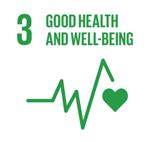
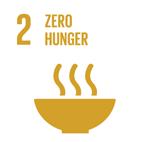















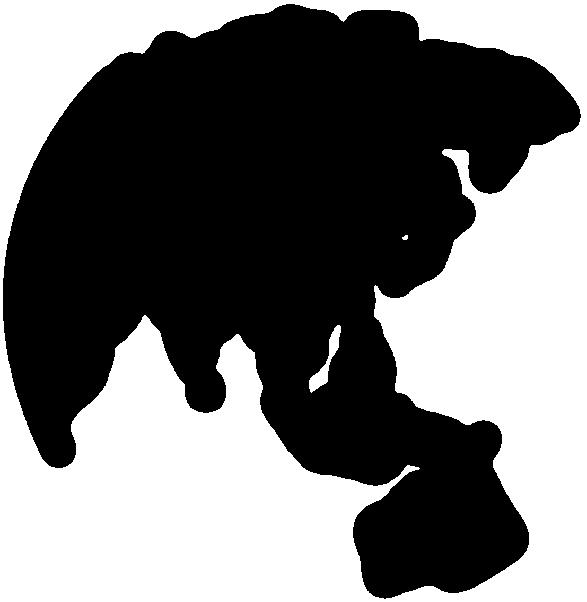


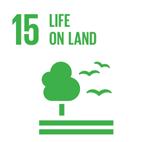








Borneo Project Highlights (2009 - 2022)

75,140
14 Toilets
Over 75,000 trees* / seedlings planted.
9 Bridges
Constructed 14 toilets and installed 7 septic tanks as central shared community facilities.
600m
Over 9 bridges built / repaired to allow villagers easy access to a range of amenities and allow access to school for students during rainy season.
Over 600m of drainage laid around villages to help reduce stagnation of water.
14 Schools
Built or improved facilities for 14 Kindergartens.
Numerous village enhancement projects such as building and refurbishment of:
• Youth centres
• School canteen
• Indoor sport facilities /Volleyball courts
• Community centres
• Community Toilets
• Community canteen & event space
* More than 23 species of trees have been trialled and planted on a large scale within the forest habitat restoration efforts including trees that provide fruits for special wildlife including orangutans and hornbills.
In Borneo, projects are designed to make a significant and lasting impact on the region’s most critical issues. Projects typically focus on:

Village Improvement works to improve the facilities of the rapidly growing community of Bongkud.
Habitat Conservation involving activities to help safeguard this wildlife paradise for future generations by helping to tackle deforestation.
Ecotourism and recycling initiatives.

BC-BKD-002
Bongkud is a relatively large community comprising over 2000 people spread over two villages and lies 15 kilometres from Ranau in Sabah, Borneo. The level of state funding is inadequate for such a large population resulting in overcrowding, a lack of public resources and relatively high poverty levels. A series of projects are being undertaken in Bongkud such as improvement of the drainage system for the village, repairing bridges to enable access to schools, farmland and public transport without the need for long detours, essential footpaths to allow children to get to school safely and ongoing building repairs around Bongkud.
Students rebuilt and laid drainage around the vicinity of the village to help reduce the stagnation of water that may cause mosquito borne diseases. A total of 158m of drainage was completed. 134m used traditional wooden framework while the remaining 24m was built using plastic moulds. Drainage was also improved around the Surau (mosque) before building a 20m walkway to connect the mosque to main buildings.
Students also worked on improving the safety around the community youth centre by fixing a low concrete curb around the building to avoid encroachment of vehicles.

BC-NAR-006
Narawang is a small village located three kilometres from Camp Bongkud. We are running a range of small projects here to improve the safety, functionality and general look of the village. Priorities include the construction of walkways and steps, and to repair and clear surface drains to prevent standing water that can become a breeding ground for disease-carrying mosquitoes. Other activities include fitting out a storeroom at the kindergarten (‘Tadika’ in Malay) and landscaping, repairing and extending classrooms and out-buildings at the primary school.
Built the front walls of the canteen (extension to the community’s church) and started plastering the existing walls. Roofing materials have also been purchased for installation by the community.

Students also helped with the resurfacing the waterlogged entrance and driveway for the community hall by laying garden path tiles to the community hall grounds along with building a narrow and shallow drainage system to divert the rainwater from the hills that have been collecting in the grounds of the hall. We will look to continue working on this project until the flooding issue around the hall is rectified fully.
BC-TIN-011
Tinangol resides in one of the poorest regions of Sabah. Most of the 100 households here survive through farming and selling their produce at local markets, but it’s a tough existence for most.
In 2017, we started to build the community centre which will function as a communal meeting place and also where judgements of Native Court will take place. It has 2 halls, 3 office rooms, a pantry and shower and toilet cubicles.
All the wall surfaces of the community centre were plastered and painted with undercoat paint within 30 days. We are not completed here yet and future travelling students will get involved with some of the finishing works such as installation of window frames, windows and doors. Final painting, murals and landscaping works.
Did you know?
Community centres (‘Balai raya’ in Malay) are commonplace in Sabah and form an integral part of village life. A well-used and maintained community centre is often a good indicator of the overall health of the community.
BC-TMB-002
The village of Timbang Batu is close to Tinangol, but the absence of a proper road leading to the village isolates this community and makes life even harder for its residents.
The village is also very spread out and so the village chief requested that we provide them with a new community centre where they can come together, hold functions and become more organised.
A new community centre is being built after the old collapsing wooden one was torn down in 2016. This new hall is mainly made of concrete and is planned to have wooden and traditional ‘Tingkang’ areas on the front and back. The main building consists of a main hall and 2 store rooms.
The concrete flooring is now 100% complete. The side walls and outline of the storeroom has also been raised partially and 35% of brick laying works have been completed.
BC-RBN-002
Rang Bulan is a coastal village where fresh water supply is mostly derived from wells. These wells would be shared by 5 to 10 households depending on location. Some of these wells were dug a long time ago and with construction of the nearby Pan Borneo Highway water run offs have affected the quality of the well waters. There is a need to raise the base and the walls of the wells to ensure cleanliness.
Student travellers raised the flooring and walls of 2 wells in the community which will provide fresh water to at least a dozen homes in this coastal village.


The local Kindergarten in Kampong Buah Pandai is KEMAS (Community Development Department). Small projects have been completed overtime to ensure continuous maintenance including repairs to fencing, new septic tank and painting of walls.
The chain link fence was erected for the kindergarten.
Students helped build a 2 section septic tank for the toilet at the kindergarten and re-surfaced the flooring of the toilet.
The exterior walls were painted in the kindergarten’s official colours.

Since 2012, we have been working with the school to improve, maintain and extend classroom facilities and have subsequently helped rebuild an old wooden resource centre to cater for religious classes. As it was badly damaged, we have constructed a new roof and built new walls using eco-bricks.
In heavy rain and windy days the open areas above the eco-brick walls would allow water drops to enter the classroom. In 2022, travelling students completed 24 recycled frames for the air vents. Upcycling the bottle caps fits in with the eco theme of the building, educates on plastic pollution and assists in a small way with waste management on the island.
Eco-bricks are made from shredded plastic and mixed with concrete. Camps have invested in brick moulds and have made over a thousand bricks for building the extra classroom.
How are the recycled air vents made?
These are made from bottle caps collected from the beach and tied with a combination of salvaged and new hardy fishing lines for each frame.

BE-MAN-019
The Marine Debris Management project was done in collaboration with Reef Check Malaysia (RCM).
2002:
In 2022, all our travelling students participated in beach clean ups where bottles were collected on the beach, including around the island village. Bottles were cleaned, counted and pressed in a compression machine to form bales for easy transporting to the mainland recycling center.
Each bale contains 500-700 plastic bottles.
Travelling students also helped the local staff at RCM to collect waste (general waste & food waste) from all the houses in the village to send to the local refuse facility on the island.

The jungle bordering the banks of the Kinabatangan River is one of the world’s most important ecosystems, home to nine species of primates including orangutans and endemic proboscis monkeys, and a host of other wildlife including pygmy elephants and clouded leopards. Yet it’s also one of the most degraded and logged areas in Asia, putting many endangered species at the imminent risk of extinction.
Batu Puteh is a community run initiative combining eco-tourism with the protection and re-establishment of endangered forest and riverside environments, namely the Supu Forest Reserve and Kinabatangan River.
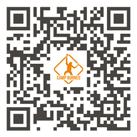


Kopel is a village-based co-operative at Batu Puteh, a joint venture of local rural community who are fishermen and farmers. Their mission is to create an alternative path of co-existence with the remaining rainforest eco systems, to nurture and protect the biodiversity of lower Kinabatangan and to generate a sustainable long term income generation for the community in the area.
We are supporting Batu Puteh through our reforestation programme in collaboration with our conservation and eco-tourism project partner, Kopel and our volunteers. This will help improve wildlife habitat and provide vital corridors for the movement of animals between forested areas along the river. This project is also vital as it creates jobs through eco-tourism, giving alternative, sustainable employment to the community. Tree
1300 trees endemic to the area were planted throughout the season.
Each of our projects is designed to support the UN Sustainable Development Goals (SDGs) and in particular the following SDGs within Cambodia.


















Cambodia Project Highlights (2010 - 2022)
69 Built or restored 35 wells to provide drinking water and water for crop irrigation.
35 27
69 toilets built, mainly for private homes, improving sanitation and safety for families
11,000
2
27 chicken coops built for 27 families to help provide a source of income.
127
Over 11,000 tree / saplings planted. Pay the monthly salary of 2 English teachers to support year round English language classes.
Clay Water Pots have been made to help families maximise the collection of water during the rainy season.
In Cambodia, projects are designed to make a significant and lasting impact on the region’s most critical issues. Projects typically focus on:
Building wells to provide drinking water and water for irrigation to ensure a reliable source of essential food.
Building toilets to provide better sanitation for the community.

Working on school improvement projects, where they may build or renovate school buildings to create inspirational and stimulating learning environments.


Building chicken coops to enable families to raise chickens to supplement their food and to provide a source of income.
Taking part in reforestation work.
Constructing village clay water pots to maximise water collection.
CC-CBP-010
Access to water, especially during the long dry season is a major issue for most rural communities in Cambodia. The village of Ta Lek does not have a mains water supply, but they are luckier than many other areas as they have ground water that is not too deep and can be reasonably easily accessed via wells. However, chronic poverty means that community wells
are very few and far between. This project aims to build many more wells throughout the community so that all houses have access to water all year without having to walk long distances to collect it.

Completed a total of 35 wells for the community since 2016.

The Sen Son Family used to walk more than 1km with buckets to the nearest canal to collect just enough water for drinking and cooking. During the dry season the canal turns dry and there is a shortage of water making life hard for the family. In 2018, student travellers helped build a well for the family, which has not only provided them with access to plenty of water but has now allowed them to start growing food for their own consumption and giving them the opportunity to sell excess fruits to those travelling through the village. They can now wash their clothes every day and have started to raise chickens and cows.
Hear from Uncle Mao, the village headman on how this project helps the people of the village. Click Here
CC-CBM-020
Beng Mealea commune is located on the border of Kulen Mountain National Park. During the rainy season, people are solely dependent on rainwater collected from their roofs and gutters. During the dry season a small reservoir provides the only water source nearby.
2002:
19 concrete jars, each containing 500 litres of water were constructed and distributed to 9 local families in order to help them maximise their water collection during the rainy seasons.
This is how village clay water pots are made.
It takes 1-2 days to make each clay water pot using a wooden mould, oil, cement, clay and water
1 2 3

Iron Loop
Wooden Slat
Cement poured into bottom for base
Iron loops left in place for structure & support.
Wooden slats are positioned around iron loops to form the mould of the pot.
Soft, worked clay is laid over the wooden mould. The mould is oiled to prevent sticking. Wooden slats removed from set clay. Clay is smoothed, shaped and sculpted into desired shape / finish.
Han’s Favourite Project
CC-CBM-014
As in Borneo, our aim is to become a centre of excellence for permaculture development and this is achieved by providing ongoing training to the community and through the support of our student travellers. At Beng Mealea we have several hectares of land which we intend to turn into a “Jungle Garden”, growing a wide and diverse crop and experimenting with new ideas and concepts, which could help the local community improve food production, especially during challenging seasonal weather.
Since 2011, we have worked on this project from initial draining, to planting 500 larger tree species to provide shade for the crops, continuing with farm maintenance, constructing fences to prevent cattle from eating the crops, planting vegetables and banana trees, along with constructing a jungle garden to allow the children to learn about trees and traditional medicines.
Student travellers made 18 x 900kg bags of rice charcoal for fertilizer, grew 100 sandal wood tree saplings and planted an additional 730 trees in the community reserved forest.
CC-CBM-004

According to the World Food Programme (WFP) ‘Cambodia produces a surplus of paddy rice for export, but household access to sufficient and nutritious food remains a serious challenge’. This problem directly correlates to the high level of poverty in the country. About 90% of the poorer population in Cambodia live in rural areas. These are the individuals most affected by hunger. Currently, two-thirds of the country’s 1.6 million rural households face seasonal food shortages each year. This project both in Beng Mealea and Beng Pae will help provide essential food for local families. Chickens are relatively easy to look after and their waste can be used as fertiliser to grow crops.


Built 8 chicken coops for 8 local families in Beng Mealea. Two hens and a rooster were given to each family on completion day by students.

In 2019, we gave Oun Dara a rooster and two hens. He has become the most successful farmer out of 22 other chicken farmers in the area and is proud of how his chicken farm is growing. His entrepreneurial spirit has helped him to now expand into duck farming. During lockdown our local in-country staff helped him build a separate house for his ducks.
Did you know?
It takes 4-5 days from start to finish to build a chicken house/coop. With proper care each family can breed up to 80 chickens in a year.
CC-CBM-010
More than half of the school grounds are wet and muddy during the rainy season, severely limiting the amount of outdoor recreational space for the children during break times. We plan to landscape the area around the pond in front of the teacher accommodation block and to build concrete pathways to improve classroom access and safety.

2022 Update:
Travelling students made 1,230 floor tiles and laid an 8m² pathway.

CC-CBM-017 and CC-CBP-009
Camp Cambodia has been employing a local English teacher in both villages as there is currently no English teacher at the school. Due to a lack of space at the local school, the lessons have been taking place in our camp. The project aims to build and furnish a purpose built classroom to use for the English lessons.
A highlight for us in 2022, was the reopening of the English classes in Beng Mealea and Beng Pae after the pandemic. We have around 200 students that have excitedly returned to school to learn English. The school is open all year around but when our student travellers are visiting the Camp, they join in the lessons and provide the teacher with extra assistance in helping with speaking, reading, and writing lessons.
One of the main reasons we teach English is for employment. Beng Mealea is close to Siem Reap and tourism jobs. The classes allow students to access global media and news giving them a wider global perspective.
Camp Cambodia support the running of English classes by employing both local teachers and paying them a monthly salary to ensure that teaching goes on 365 days a year and not just when we have student travellers in camp.
Our English teacher was one of our original students at our English teaching in Camp Beng Pae and has been doing a wonderful job. Camps International aim to continue supporting her own development by helping her connect with other teachers.

CC-CBP-004

As with most rural schools in Cambodia, Ta Lek is very underfunded & struggles with basic maintenance of the school infrastructure. We aim to refurbish the primary school in Ta Lek Village in Beng Pae Wildlife Area, improving the basic resources necessary for academic performance. The school currently serves 386 pupils, though this is set to increase considerably. Completion of the project will provide the children of this area with a better learning environment and consequently, a much better education.
Our travelling students reconnected with the community and helped with a school clean-up by with the children and working in the school garden.
At the start of this project none of the houses in the village of Ta Lek had any form of toilet. This meant that people go to the toilet in the undergrowth around their houses, which creates a very high risk of spreading disease. Our aim is to build a simple toilet design which includes rainwater harvesting for flushing and hand washing and to start building these initially in strategic places in the village, eventually providing one toilet for each household in the village.
In 2022, we built a further 8 toilets raising the number of toilets to 69.
Around 80 per cent of Cambodia’s population lives in rural housing. Traditional houses are usually raised stilt homes made of wood to protect the occupants from flooding and mud slides, but due to widespread poverty, houses are often rotting and leaking. It’s not uncommon to find tiny little shacks made of grass and sticks that are home to families with up to nine children. Without any income it is impossible for these families to buy the materials needed to upgrade their houses. Camp Cambodia continues to identify those families in need so they can look to replace as many of these houses as possible with a simple construction that can be built reasonably quickly but will provide a good standard of shelter and security for those in need.

Camps International and travelling students helped build a house for a family in the village in 2018. Read how the support from our travellers and in-country teams has contributed to paving the way for a more secure future for the family.
 CC-CBP-003
CC-CBM-013, CC-CBP-002
CC-CBP-003
CC-CBM-013, CC-CBP-002


Each of our projects is designed to support the UN Sustainable Development Goals (SDGs) and in particular the following SDGs within Costa Rica.














400
Beehives built approximately.
60 134
Bird boxes built and installed. Different shaped and coloured moulds created to form an artificial reef and provide a sheltered environment for endangered species in the area.
37
Concrete boundary posts installed to segregate the refuge (national park) from private land.
Tourism boosting initiatives:
• 59 picnic benches built
• Maintenance and appearance of the Caño Negro Park
• Maintenance and improvement of sacred petroglyph site
• 20 barbeques constructed
Formed Key Partnerships with SINAC and the Integral Development Associations (ADI).
In Costa Rica, projects are designed to make a significant and lasting impact on the region’s most critical issues. Projects typically focus on:

Supporting conservation efforts such as reforestation, beehive construction and lime-washing trees.
Contributing to projects to encourage eco-tourism in the area.
Supporting community development such as constructing a special educational needs centre and a community playground.
Supporting local NGO on projects such as monitoring biodiversity, building bird boxes and supporting primate conservation.

Caño Negro is a wildlife reserve wetlands almost on the Nicaraguan border. The project work here focusses on conservation and environmental protection.
Although steps have been taken to conserve Costa Rica’s wild places, approximately 20,000 acres of land is destroyed annually. Recent studies suggest that only one quarter of Costa Rica’s original forest cover is still intact. Half of this is under the protection of national parks and biological reserves. Indigenous and forest reserves, wildlife refuges and privately owned plots occupy the other half and this is where the problem exists. Laws are too lenient on land that is not deemed a national territory, and recent amendments to forestry law makes it even easier to obtain logging permits. We aim to reverse this trend by building a tree nursery that can grow native species that eventually can be planted in and around the community.
Continued to work on the creating wooden structure beds for the germination of native plants within the SINAC nursery.
SINAC is the Costa Rican National System of Conservation Areas. Their mission is to manage the conservation and sustainable management of wildlife, forest resources, protected areas, watersheds and water systems for the wellness of current and future generations.

Sadly, the Mangroves at Bahia Thomas have been badly damaged by a salt production company. They cut down many trees to make the land flat and in the process of extracting the salt they damaged the mangroves and subsequently damaged the unique habitat of a variety of animals.
Did you know?
Not only do mangroves store up to up to five times as much organic carbon as tropical upland forests, but they also serve two very important ecological functions.
1. Their interlocked roots stabilise shorelines, preventing erosion and protecting the land — and the people who live there — from waves and storms.
2. They provide ideal breeding grounds for much of the world’s fish, shrimp, crabs, and other shellfish.
The aim of this new project in Costa Rica was to aid the natural restoration of the mangrove, by digging channels, making sediment deposits to generate the perfect environment for plants to grow and removing excess sediments from the trenches to allow for better waterflow. Our student travellers worked a total of 29 days on this project.
CRE-GNC-002
Bahia Junquillal National Wildlife Reserve was created to protect the region’s coastal mangroves and dry forests. It has been awarded the Ecological Blue Flag certification in recognition for its conservation efforts and is home to several species of mammals, reptiles, and birds. Through tourism the National Park generates income to put back into new conservation and environmental projects.
A recent hurricane in the area destroyed buildings and facilities and has impacted tourism in the area. The aim of this project was to help the National Park restore tourist facilities so it can start to regenerate income for their conservation efforts.
39 wooden benches were built, 20 concrete benches and 20 barbeques were constructed for recreation use by day visitors.
CRE-CNN-016
Building two pollinator hotels to provide suitable habitats to a variety of different pollinators which in turn will help maintain the biodiversity of the Tropical Rain Forest. They can be found in the Caño Negro Park and the other in the offices of the Caño Negro National Mixed Wildlife Refuge.

CRW-CNN-010 and CRW-CNN-011
These projects involve working alongside SINAC and include placing camera traps for wildlife observation, building fauna crossings to allowing a safe passage for various animals between ecosystems split by paths or highways.
7 camera traps were placed for monitoring and 3 monkey bridges were constructed.
Additional projects in collaboration with SINAC include:
• Caño Negro Refuge boundary markers to outline a clear separation between the refuge land and the private land. This is vital in assisting the patrolling of the park rangers and to keep away unauthorized visitors.
• Recycled cap wall mural in the SINAC facilities of the Caño Negro Community. The character the mural is based on is Toño Pizote. Why? Toño Pizote is the official mascot for the prevention and control of forest fires in Costa Rica.

• Maintenance of railings in the Refuge to maintain the safety of pedestrians.
CRC-TER-005
Many people work in the nearest city (Buenos Aires), leaving vulnerable SEND members on their own without anyone to care for them. We aim to build a SEND Centre with a kitchen and dining room, toilets and a classroom that will be staffed by the local community. There will also be facilities to cook and sell products to raise funds for the maintenance of the centre.
This project started in 2019. The original structure was pulled down, new foundations laid, and 1800 bricks used to construct the walls. Our travellers in 2022 did a fantastic job of restarting the project by levelling floors, constructing structural columns and finishing the rear bathroom, drainage and septic tank and children’s play area.
150 students attend the local primary school in Terraba. At the school there is a fully functioning kitchen and cafeteria however a considerable amount of money is spent on buying ingredients for preparing meals. The school would like to be more selfsufficient and grow their own food.

Student travellers helped create a school garden and have planted cucumber, radish, coriander and corn.











Each of our projects is designed to support the UN Sustainable Development Goals (SDGs) and in particular the following SDGs within Peru.














Peru Project Highlights (2015 - 2022)
70
10
Constructed 10 guinea pig barns
1,000
70 Toilets built 17
Over 1,000 trees planted
14 13 15
Built 17 greenhouses
Constructed 14 cattle sheds
Built / Improved 13 homes for families
Built 15 smokeless fuel efficient stoves
In Peru, projects are designed to make a significant and lasting impact on the region’s most critical issues. Projects typically focus on:

Renovating houses and constructing toilet blocks in each of the houses in the village, providing families and vulnerable elderly residents with proper sanitation facilities.
Community development projects which could include anything from school improvements and construction, to building community centres.
PC-MAR-004
The community at Anqoto are in the process of building a kindergarten within the boundaries of the school. However, they have a very limited budget to complete the project and so Camp Peru agreed to help with any outstanding work. We have built a classroom and kitchen for the kindergarten and toilets for the children and teachers and will continue with further developments and maintenance.

In 2022, our travellers helped with the maintenance of the kindergarten walls and the playground. The sanding and repainting of the playground was carried out, along with replacing deteriorated wooden structures and ropes for the swings. An educational mural, tables, chairs and bathroom doors were painted.
PC-MOR-009
The community surrounding Camp Moray is in need of a community centre. They don’t have a place to gather for meetings so are currently using an open field stadium, which is not suitable. We agreed to build a multipurpose building for all community members.
The community centre was started in 2019 and was 80% completed. In 2022, our travellers helped render the back walls of the community centre and plastered the inside and exterior walls.


In every community in Colca, you can see animals walking freely down the street and sometimes they enter buildings. The medical centre requires fencing to keep animals out and a storage room where documents that are currently piled up in the observation room can be moved and catalogued.
This was a new project for 2022 and the pre-foundation and foundation of the future dental office was completed. The areas destined for the vegetable garden for the elderly was prepared for planting.
 PC-COL-010 and PC-COL-011
PC-COL-010 and PC-COL-011
Each of our projects is designed to support the UN Sustainable Development Goals (SDGs) and in particular the following SDGs within Ecuador.
















29
Toilets built
12,000
60
Native plants and trees planted approximately
Octopus houses built as part of restoring the reef structure around El Pelado
12 Worked with over 12 schools to improve learning environments and facilities
1,200+ 1,000kg
Did you know?
Reforestation of 1,200 orchids
Environmental clean-ups resulting in the removal of over 1000kg of rubbish
Ecuador is known as the country of orchids – boasting more than 4,000 different species.
In Ecuador, projects are designed to make a significant and lasting impact on the region’s most critical issues. Projects typically focus on:
Community development through activities such as constructing a neighbourhood recreational area, improving infrastructure at a local high school or sanitation facilities.

Tackle the issue of waste in the natural environment, by participating in beach clean ups and working on rubbish management projects.
Amazon rainforest generation - assisting with important environmental projects, collecting saplings and replanting trees in the jungle.
EC-COS-001
Due to lack of government funding, much of the school is in a poor condition. The playground is dilapidated, there is no dining area and the toilets don’t work. We’ve agreed to help improve the general infrastructure of the school.
In 2014, we started cleaning up the school grounds. Since then we’ve created a new allweather playground, built a dining area, provided sports facilities and constructed furniture. In 2016, we painted the exterior of the school, fixed the existing toilets and started constructing another one for the infants. From 2017 - 2019 we continued to refurbish existing classrooms by painting the exteriors, completed a toilet block for first grades, constructed a roof for a recreational and educational area and reconstructed the playground.

EC-DNB-002
The number of children enrolled at the school is increasing and there is currently not enough storage space for all their belongings. Because of this, the teacher has asked if we could build some shelving units in the school so that each child has their own storage space. In addition, the humid environment of the rainforest means that metal rusts very quickly. To prevent deterioration, metal structures such as the playground need to be painted regularly. From 2017-2018, we painted the play equipment and built six large shelving units, installed a roof, laid a path to the classrooms and toilets and built a storeroom.


This community garden has been running for several years producing a variety of plants and trees, many of which are native. The plants grown here are then given to people who are in need, either to forest or reforest their land, or enable them to grow crops such as coffee. The garden does not charge any fees for harvesting the produce but instead relies on donations. We are supporting the community in their endeavours by helping to expand this amazing community initiative. Between 2016 - 2019, our student travellers filled more than 2,950 bags with potato seeds, peregrinas and more than 100 tangerines. They have also planted 2283 native plants such as crotos and palms.

The beautiful beach at Puerto Rico is an important nesting site for endangered turtles. However, it’s also heavily polluted by vehicles illegally driving on the beach, oil spillages, and littering. There is also seafood waste from fishermen and refuse discarded from boats offshore. Millions of birds, turtles, fish and marine mammals die each year due to marine refuse; either drowning by getting tangled in fishing nets and debris, through poisoning, or by ingesting plastics. All student travellers that spend time at our camp get involved in at least one beach clean-up with the local community.
In the Galapagos Islands we work closely with the Galapagos National Park (GNP) by working in their plant nursery to aid future reforestation of the islands. We also work with a local school to improve their gardens. Due to the high plastic pollution accumulations in the Galapagos, partly due to the influence of the ocean currents bringing plastic litter from other continents, we carry out several beach clean ups on the sea front.
Our student travellers walked the beaches and sifted through the sand to find micro plastics, glass, wood, bits of fishing nets and other pieces of rubbish littering the area. They also helped with the reforestation project and planted Otoy.

Otoy is crop that is sometimes eaten by humans but is more commonly eaten by the Giant Galapagos Tortoise. Farms that grow otoy are able to sell the huge leaves to the tortoise raising facilities so that tortoises can eat a native plant that is a part of their traditional diet.
Ecuador is the eighth most biodiverse country on Earth, with more than 20,000 plant species, 1,500 bird species, more than 840 species of reptiles and amphibians, and 341 species of mammals. Yet it also has one of the highest rates of deforestation in the world, where up to 200,000 hectares of forest are destroyed illegally every year leaving less than 15% of primary forest intact. Most of this is due to the expansion of pastures and pressure from oil and mining companies. The Shiwakucha community are very concerned about the deforestation and are keen to preserve the forest by planting indigenous trees. As the community expands, they cut down more trees to sell the wood and make space for crops. The Shiwa palm (native to the amazon) has suffered the most from this deforestation.
Since 2017, we have around 2000 Shiwa palms have been planted in the Amazon.
The Shiwa palm is from the Amazon and has multiple uses. The palm leaves are used for the roof of temporary houses/structures, the fruit is turned into drinks or oil to use in cosmetology and cooking. It is also within the palm that the chontacuros, a delicacy for the indigenous people of the Amazon, grow.
Chontacuro is a worm that lives in the chonco or shiwa palm. Chontacuros is Quechua word meaning “Worms of the Chonta”. This small insect, similar to a caterpillar is said to have nutritional and medicinal properties. They can be eaten roasted, cooked or fried, accompanied by onion sauce, tomato, lettuce and cooked yucca.
The Camps Foundation provides vital financial support for the wide range of projects that are developed and run by Camps International Group every year. At any one time, Camps International may be working on more than 100 different humanitarian, environmental and conservation initiatives worldwide, delivering impact through responsible tourism.


As a registered charity, the Camps Foundation relies on essential donations from crowdfunding through Justgiving, businesses, organisations, private donors, staff fundraising efforts and our family of committed volunteers and friends to ensure we can deliver on our ambitious promises to each community and region that needs our support.


Learn more: Donate here:

Finally, we would like to say another massive thank you to all of you that made this possible. Since Camps International started we have developed 463 humanitarian, conservation and environmental projects and this could not have been possible without the help from our travelling students, travelling teachers, expedition leaders, donors and all our Camps’ employees.

To find out more about our current projects and how you can get involved, please visit.
www.campsinternational.com
www.campsinternational.ae
www.campsinternational.com.au
www.campsfoundation.org
Whether it takes a month or 20 years, once we commit to a community, we never leave a project unfinished. We have so many projects to mention, that we hope the following section gives you an idea of the variety of amazing things we’ve achieved so far.
Aloe Vera
Kidongu Ex-Poachers
Supplied more than 500 farmers with aloe vera (elephant resistant crop) and provided training in growing, harvesting, and producing aloe vera products to sell.
Promoted eco-tourism as alternative to poaching by establishing cultural centre, building tribal homes in different styles.
Sagala Wildlife Conservation Project Habitat restoration, tree planting, wildlife waterholes, care of Eland, goat deworming.
Kanja
gravity fed water system and storage, plumbing to supply clean fresh water to more than 150 families.
Bore Hole Dug bore hole and installed pump to provide drinking water to village. Funded entirely by volunteer donation.
Dispensary and Emergency Ward Built new emergency ward with ablution block and full renovation of existing dispensary.
Sanitary Pads for Kenya
Provided employment for 18 women making washable sanitary pads for 1,200 girls to improve healthcare and school attendance.
Student Sponsorship Facilitated donations from clients to support secondary school fees to increase access to education in Muhaka, Kenya.
House Building Tsavo

Replaced dilapidated houses of the most vulnerable members of in and around Itinyi.
Making and delivering porridge to the school children.
Malewa Family House Improvement Fixed a house for a family of 10 that was destroyed by the rain.
Malewa Water Project Built a reservation water tank that held 10,000 litres and supported approximately 500 people.
3 Years 2014
3 Years 2014


Expansion of single mothers Centre Completed main centre which is being used by the group to meet up and learn arts and crafts. The exterior of the centre was landscaped with a small area dedicated to growing crops.
Built a community learning centre including water system.
in the maintenance and landscaping of the local Mother and Baby Clinic.
Paradise
Timbang Batu Upgrade to Gravity Water Feed System
5ft x 2ft dam constructed & 500m pipe installed to improve water supply to the village.
Upgraded the gravity water feed used in the village for collection of the water from source and in distribution through piping to the houses in the village. Installed two new 3000 litre water tanks.
Built a dam and installed system to funnel clean water to nearby houses, providing water for about 300 people.
Made steps on the trails and constructed rope handrails for people to hold on to especially when crossing the narrow path.
Constructed and installed a water storage system in Tinangol that separates the silt from the water, enabling access to free, clean water for the entire community.
Constructed new kindergarten, expanded the medicinal garden, and built fence around playground area.
houses on Mantanani were upgraded for tourist accommodation. Reception area and office constructed as part of homestay initiative.
a house, for an elderly woman, complete with toilets and shower room. The building was built with eco bricks.
toilets were completed, including rainwater harvesting systems for flushing water.
Kipouvo Hanging Bridge Repair
Kipouvo Village Improvement Scheme
Luanti Baru Repairs to Non-contractable Diseases Centre/ Clinic
Gana - Raleigh Primary School
3 suspension bridges were repaired.
Small projects were completed around Kipouvo to improve village infrastructure. Allowing the community to grow and improve eco-tourism initiatives.
Extending the veranda and repaired the roofing of the centre.
1 year 2017
1 Year 2017
1 Year 2017
Permaculture Farm and Tree Nursery
Bongkud Community Market Place
Constructed two static bridges allowing safe entry to both kindergartens safely. Decorated school rooms and laid concrete paths. Installed rainwater harvesting for flushing toilets and created educational wall murals.
Created small permaculture farm, tree nursery and conducted training on permaculture techniques.
Built concrete area within the space adjacent to the shops allowing market holders to erect their own stalls.
4 weatherproof community notice boards were installed around the community to improve communications. Ongoing repairs.
Toilet/changing facility was constructed with cement bricks and zinc roofing sheets. The villagers completed the installation of water supply and installed doors.
Work included improving the safety, functionality, and general look of the village. Landscaping, repairing and extending classrooms of local school. Improving drainage around the kindergarten and extension of the volleyball court.


Beng Mealea School Kitchen Built a new kitchen to replace dilapidated wooden thatch open structure, improving hygiene for 900 pupils and staff. 3 years 2012
Reservoir Dam Repair Repaired and reinforced walls of reservoir, restoring clean water supply to 5 villages and thousands of people. 2 Years 2012
Classroom Improvement Reinforced walls and replaced roof (contractors only) at Beng Mealea.
Accommodation Block
Constructed accommodation for schoolteachers at Beng Mealea who were previously ‘squatting’ in a classroom overnight.
3
2013
Clean Water Initiative Provision of clean water to Beng Mealea school. Included construction of large water storage tanks to store water during the dry season.
2
2015 Teuk Lich Recycling Constructed recycling area to encourage school to manage waste in a more environmentally conscious way. 1
Beng Mealea Library Built and equipped new school library. Subsequent extension for reading room completed in 2017.
Camp O Romchek Village Wells Built two chicken houses for two families and bought chickens for them to raise on their farms.

Coastal Clean Up Collected around 200kg of plastic and rubbish from Playa Panama.
Reef Regeneration 134 different shaped moulds were made to be sunk offshore by divers to produce a sheltered environment for endangered species in the area.
Terraba Communal Kitchen Communal Kitchen built.
Pacuare Collection and Compost Area
Compost centre was completed to help with the management of waste and support recycling efforts.
Petroglyph Trail Construction bamboo steps along the entire petroglyph trail, a sacred site for the local indigenous people.
Caño Negro Community Hall Refurbed main walls of the community hall.
Painted Murals 1,2 and 3 in the ADI Office
Designed, Sketched and Painted 3 murals to rejuvenate the town and promote tourism.
1 Year 2018
1 Year 2018
1 Year 2018
1 Year 2019
1 Year 2022
1 Year 2022
1 Year 2022
Fenced compound to prevent animals from damaging the saplings. Planted around 4000 native and medicinal plants. Constructed beds, fixed the roof of germinating area and built a

Project Description Duration Year Completed
Pinchollo Irrigation Improvement Laid 260 metres of irrigation piping to improve water catchment to farmland and conserve water.

Pinchollo Nursery Construction Supporting women’s employment by providing safe place for children to be cared for.
School Refurbishment and Sports Pitches Refurbished school classrooms, landscaped exterior and renovated basketball pitch.
Communal Greenhouse Restoration
Restored previously abandoned community greenhouse in Pinchollo to support community in food production.
Community Greenhouse Built new adobe greenhouse to support village in increasing their food production.
Educational Murals Designed a series of murals for the school to highlight important environmental issues and family values.
2 Years 2015
2 Years 2015
2 Years 2015
1 Year 2015
1 Year 2015
1 Year 2015
Hilata Toilet Project Improved sanitation for Huarejon community by constructing 3 toilet units. 1 Year 2015 Pinchollo Secondary School Greenhouse
Encouraged food production for the school by constructing a greenhouse to shelter plants from harsh climatic conditions. Also planted vegetable seeds.
School Wall Repair at Hilata Elementary Secured school perimeter by rebuilding school wall using traditional methods.
Pinchollo Football Pitch Constructed concrete community football pitch and games area to add value to existing recreational space.
1 Year 2015
School
Build Completed school kitchen and dining area, with full water supply and electricity to support school feeding programme.
Water delivery, Maras Completed digging of trenches for water pipes to be installed. The new water installation system will provide 60 families with water.
Healthy Homes for poor families Built 15 smokeless fuel efficient stoves, 5 greenhouses, 14 cattle sheds. In total, 10 healthy homes were completed for the Hilata community located on the Altiplano, Lake Titicaca.
Anqoto Kitchen and Dining Room Construction
Maca Residential Home for the Elderly
High School Rooms and Toilets for Teachers in Pinchollo
Environmental Life Cycle for High School
preparing soil and filing bags with compost. Planted 1140 native trees.
Completed the construction of a kitchen and dining room at a local school. This included building the structure, rendering the walls, laying a floor, and installation of windows.
Constructed a purpose-built house for the elderly to have meals together, hold meetings, grow fruit and vegetables, and make beautiful handwoven handicrafts. A greenhouse was also completed at the elementary school.
Built 3 bedrooms and 1 toilet for high school teachers commuting from the city to teach.
15 guinea pig houses were constructed as part of a students agriculture and food production project. The project aimed to illustrate the nutrient cycle found in nature. In addition, 5 composting bins were created for guinea pig’s waste to be composted and then used to grow vegetables in a greenhouse.
2 Years 2018
2 Years 2018
5 Years 2019
1 Year 2019
2 Years 2019
Pinchollo Cultural House Project
Completed the construction of a culture house (including toilets) in the community of Pinchollo located in the Canon de Colca valley in the Arequipa Region. This tourist attraction will act as a museum of local culture and dress that will be populated by the community with the help of the tourist board. Locals will also sell handicrafts outside.
4 Years 2019